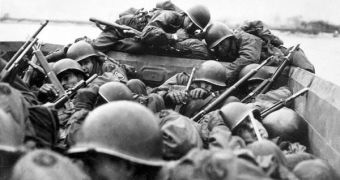The US Army is currently engaged in a research process aimed at providing it with accurate predictions on the future behavior of various cultural and political groups in the world that are now in the data base. For the successful completion of this initiative, Jerzy Rozenblit, a professor at the University of Arizona (UA), has been recently awarded another $2 million, in order to start working on phase two of a computer simulation that will provide the American Army with the information it seeks.
“It is very intellectually stimulating and goes well beyond the normal focus of engineering. A lot of it is discovery and creation, so it's fun. I call it CPR, which in this case stands for conflict prediction and resolution. Ultimately, these mathematical tools are intended to generate solutions that give us equilibrium, or status quo solutions,” professor Rozenblit shares.
“These tools allow us to compute measures that don't necessarily maximize reward. Instead, the tools can be used to convince negotiating parties that it would not be in their interest to deviate from the proposed solution because they would actually lose more than they gain,” he adds. The US Army currently finds itself in need of such an instrument, mostly because modern wars are not fought by two opposing fronts facing each other openly.
Rather, the notion of “asymmetric” conflict has set in. This is a type of armed fight in which one side clearly has the upper hand, both technologically and logistically speaking, and it is very badly harassed by the other side, which conceals its presence and never engages in open confrontations, on account of its low number of combatants. Such wars are carried by guerrillas and terrorists, and the US Army, despite all its technology, finds it very difficult to cope with it. Hence the need for a system that would eliminate conflict altogether and rule out the need for the use of weapons in the first place.
“There's a person here, there's an organization there, an explosion took place here. These things are all connected and the thought space shows you lines that connect the place where the bomb blew up and where the bomb maker lives, for example. And there's a slider that lets you move back and forth through time so you can see how events unfold or change over time in a particular region,” Brian Ten Eyck, who is the UA department of electrical and computer engineering director of research support, says.
“News bulletins, intelligence reports, e-mails – terabytes of data, more than any human can read – are constantly streamed into the database. The software can pull out the name of somebody, his or her title, the fact that they work for this organization, that they were born in this location, whatever the content of the message may be. It's not a hundred percent foolproof, which is why it's being researched. We're trying to improve the ways that machines can extract those entities, possibly even connect them, link them together,” he concludes.

 14 DAY TRIAL //
14 DAY TRIAL //